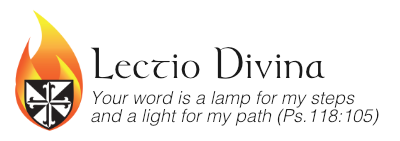
The Wisdom Moment.
The journey with the word of God seeks not only to fashion and shape our hearts into the image of Jesus but also our minds. In the words of St.Paul in phil 2: 5 we read, “Make your own the mind of Christ Jesus”. In other words, that we might see the truth of God, humanity, creation as Jesus sees it; that we might understand the meaning and purpose of life as Jesus does. This is the prayer of St Paul for the Christian community in Ephesus: “That Christ may live in your hearts through faith, and then planted on love and built on love you will have the strength to grasp the breath and the length, the height and the depth; so that knowing the love of Christ which is beyond all knowledge, you will be filled with the utter fullness of God,” Eph. 2:17-19.
This is the treasure hidden in the field of the scripture passage – a little gem of truth (indeed, there can be several) which we are invited to uncover, and to give expression to, in our own words. It involves a deep listening to the movement of grace and the movement of sin in the passage and in our meditations until we come to the moment when we say, Aha! I see it! Or I’m beginning to see it! And we work at clarifying and simplifying our expression of this new insight.
Fr Michel doesn’t make it easy when he sets out some hallmarks to determine our expression of the truth uncovered. I trust he does this to try to ensure that our efforts echo in some way the style and the power of the preaching of Jesus himself.
Hallmarks ..
The insight is be expressed in the form of a non-moralizing statement. If we stress the “should” and the “must” too quickly we deprive it of some of its potential power.
This is in keeping with Jesus’ way of teaching which was predominantly in the form of wisdom statements and stories – in this way he seeks to open up people’s minds and hearts to see things differently. This in turn, he believed, would lead people to do things differently. In knowing what is good and true one is moved into action. This is Christian virtue at its best: seeing and doing.
It is a statement that can be verified by the passage and by life experience. It is true to life! We can vouch for that.
New insight: totally new or partially new. Seeing something for the first time or seeing it more clearly than before.
Universally true: In other words, it is always true. It will be true for individuals as well as communities, and true in every sphere of life – private, public, secular and global. Jesus invites his disciples “to put their lamp on the lampstand where it will shine for everyone in the house,” Mt 5:15 . Jesus comes to bring good news to the whole human family. The challenge, therefore, is to give expression to the insight in a way that even people of other religions, or indeed people of no religion at all, will feel compelled to say, “what you are saying there is true. I have seen that too!” It is an expression of truth, therefore, that brings us into greater solidarity with all people of good-will regardless of race, culture or religion.
Has moral implications – It is calling us to change, to new behaviour, to a new way of doing things.
It is counter-cultural in the sense that we can say, “how different our lives and our world would be if we were to live this truth!
Leads to prayer. We are moved to sit with it in gratitude – to savour it, to delight in it, to rejoice in it. We repent for not seeing it before or not embracing it in practice. We pray that it might put down roots and bear fruit in our life and in the life of the world. In growing to love the truth in this way, by the grace of God we come to embody it, and to give flesh to it for the life of the world.
